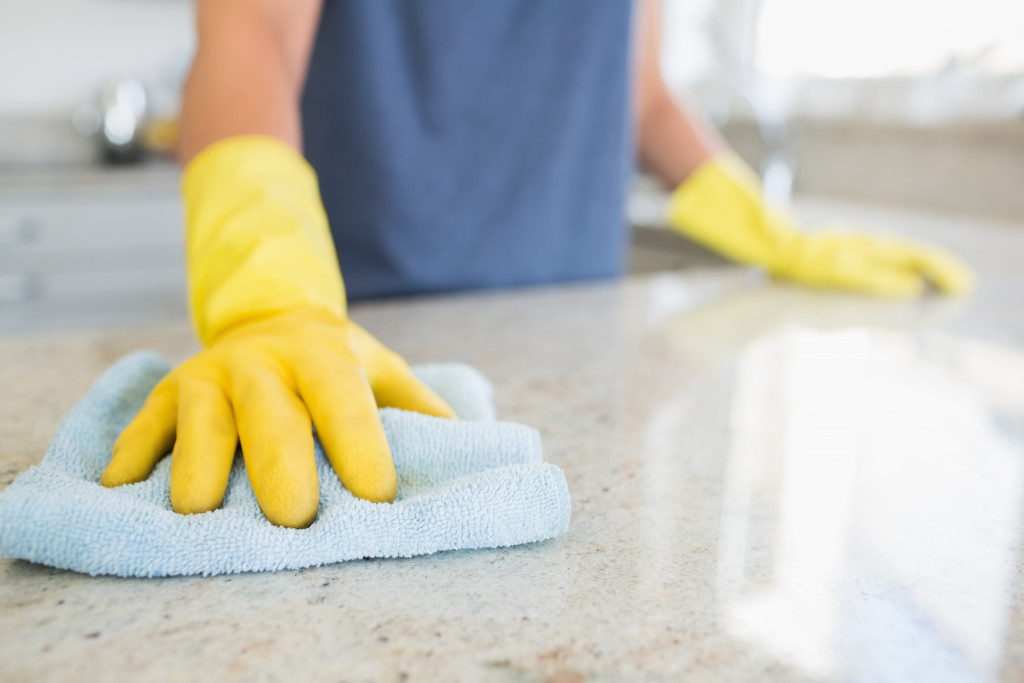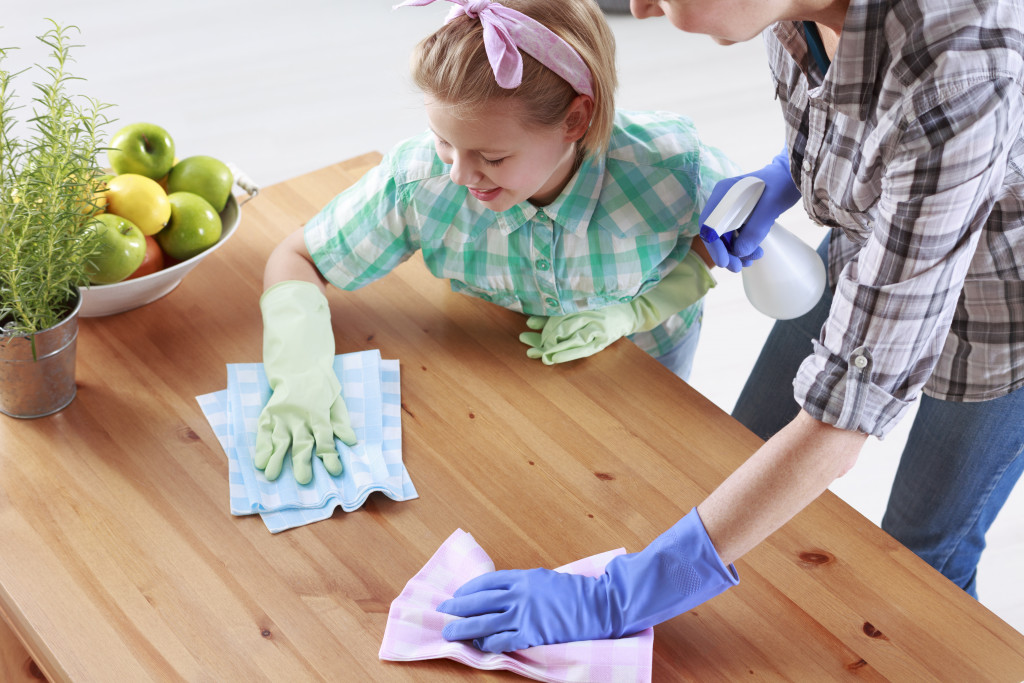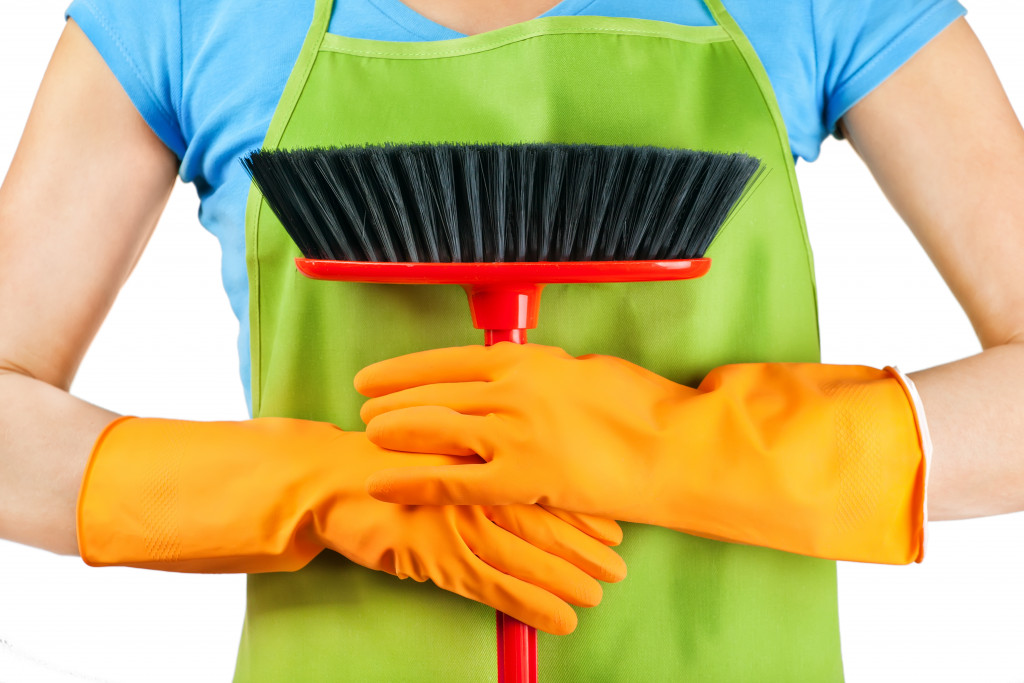- Creating an accessible home environment requires identifying problem areas and making modifications, such as installing grab bars.
- Organizing and decluttering can help individuals with disabilities navigate their living space more efficiently.
- Enhancing safety measures such as securing rugs and removing tripping hazards can improve independent living.
- Assistive devices and tools, like rechargeable battery-powered cleaning tools, can make home maintenance easier for individuals with disabilities.
- Professional services for people with disabilities can provide cleaning assistance and other home maintenance tasks.
Keeping a clean and well-maintained home is essential for everyone, but it is especially crucial for individuals with disabilities. A well-organized and accessible home environment can foster independence, promote safety, and improve overall well-being.
For individuals with disabilities, a clean and well-organized home can make a world of difference. When you’re living space is tidy and clutter-free, navigating and minimizing the risk of falls and accidents can be more accessible.
Maintaining a clean home can also help prevent the spread of germs and bacteria, reducing the risk of illness and infections. A well-maintained home can also provide comfort, safety, and security, improving mental health and quality of life.
This blog post will look at some helpful home maintenance strategies to help people with disabilities maintain a healthy living space and enjoy a happy life.
Creating an Accessible Home Environment
To create an accessible home environment, assess your current living space. Identify areas that may pose challenges for individuals with disabilities, such as narrow doorways, uneven flooring, or poor lighting.
Once you have identified the problem areas, you can start making adaptations and modifications to improve accessibility.
Adaptations and Modifications to Improve Accessibility
There are various adaptations and modifications you can make to improve accessibility. Some of these include installing grab bars and handrails, adding wheelchair ramps, widening doorways, and replacing traditional doorknobs with lever-style handles.
You can also consider installing adjustable shelves and storage units that can be easily accessed from a seated or standing position.
Organizing and Decluttering for Easy Navigation
Organizing and decluttering your living space can go a long way in improving accessibility. You can start by removing unnecessary items or furniture that may clutter your space, making navigation more challenging.
Consider using storage solutions such as baskets or organizers to keep frequently used items within reach. You can also label cabinets and drawers to help you find things quickly and easily.
Enhancing Safety Measures for Independent Living
Enhancing safety measures in your home is crucial for achieving independent living. You can start by securing loose carpets or rugs, removing tripping hazards such as cords or wires, and installing smoke detectors and carbon monoxide alarms in several areas of your home.
Additionally, you can have an emergency plan in case of sudden illness or accident.

Home Cleaning and Maintenance Tips
Keeping your living space clean and well-maintained can be overwhelming, especially for individuals with disabilities. However, several helpful tips and strategies can make cleaning and maintenance more manageable.
Simplified Cleaning Routines for Individuals With Disabilities
To simplify cleaning routines, you can consider breaking tasks into smaller, more manageable ones. You can also assign specific tasks to different days or weeks, creating a cleaning schedule that suits your lifestyle.
Moreover, you can ask for help from caregivers, friends, or family members, especially for tasks that may be more challenging to complete independently.
Using Assistive Devices and Tools for Effective Cleaning
Several assistive devices and tools can help individuals with disabilities clean their homes more effectively. These devices include lightweight vacuums, long-reach dusters, and robotic floor cleaners.
You can also consider using rechargeable battery-powered cleaning tools, which can help minimize the physical strain of cleaning.
Managing Household Chores With Limited Mobility
Completing household chores such as laundry, dishes, or cooking can be challenging for individuals with limited mobility. However, several strategies can make these tasks more manageable.
These include using adaptive equipment such as reachers or grippers, asking for help from caregivers or family members, and delegating tasks to different days to avoid fatigue.
Asking For Assistance: Services for People With Disabilities
One of the first steps in maintaining a clean and safe home for people with disabilities is knowing when to ask for help.
Different services are available for individuals with disabilities that can assist in home maintenance, including cleaning, gardening, and home repairs. It’s essential to understand the importance of seeking help from professionals trained in assisting individuals with disabilities.
The National Disability Insurance Scheme (NDIS) provides cleaning assistance for people with disabilities who have it in their support plans.
This assistance allows individuals to access a cleaner who can come to their home to assist with challenging tasks like cleaning the bathroom, vacuuming, and dusting. The benefits of NDIS cleaning assistance are numerous, including consistency, lower stress, and reduced risk of physical harm.
Apart from NDIS services, various non-profit organizations, and individuals specialize in assisting people with disabilities, including home maintenance, cleaning, and gardening services.
To access and utilize these services effectively, individuals with disabilities can search for providers through local government services, disability services, and online platforms.
Creating a Routine and Home Maintenance Schedule
Once the services have been identified, it’s essential to create a routine that both the cleaner’s schedules and individuals with disabilities can accommodate.
Establishing a home maintenance routine that works with your lifestyle and physical abilities can help you avoid frustration and promote regularity.
Establishing a Cleaning and Maintenance Routine
Apart from a maintenance routine, divide tasks into manageable cleaning routines to ensure that the house is always safe and clean. Maintaining proper routines helps prevent the accumulation of dirt, keeping a clean and safe environment for people with disabilities.
Allocating Tasks and Responsibilities Within the Household
Home maintenance is not an individual’s duty, especially if living in a shared household. Everyone should take responsibility for maintaining the home, and areas of expertise can be allocated to different household members, including cooking, cleaning, and home repairs.

Maintaining a clean and well-organized home is essential for individuals with disabilities. It can promote independence, improve safety, and enhance overall well-being. By implementing these strategies, individuals with disabilities can achieve a healthy living space and enjoy a happy life.
Whether it involves creating an accessible home environment, simplifying cleaning routines, or using assistive devices, every step counts towards achieving a healthy and comfortable home.
